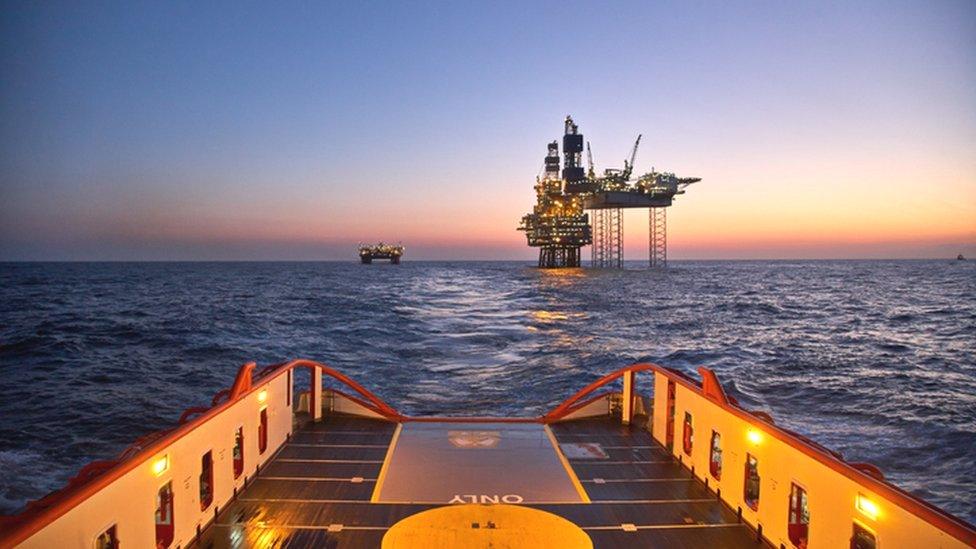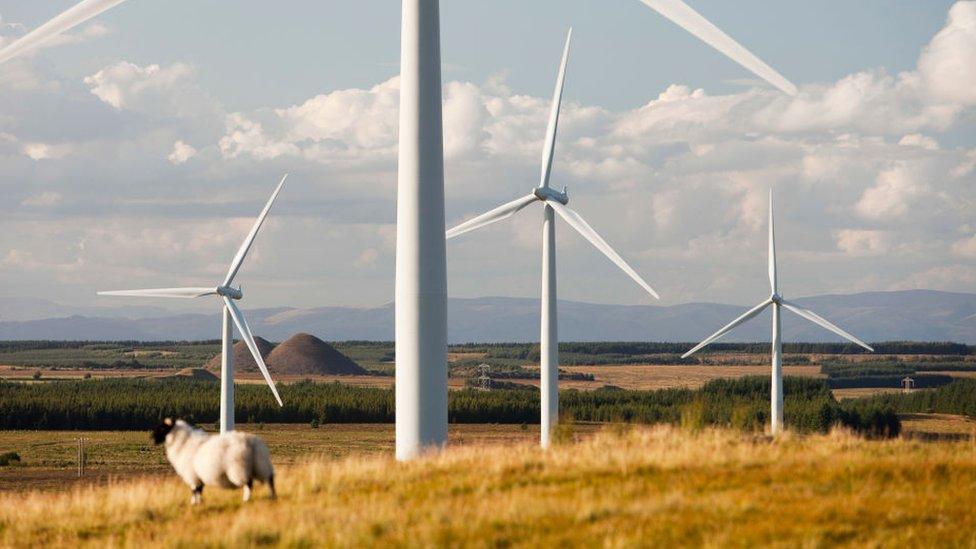Employment and earnings hit by North Sea decline - report
- Published
- comments

Experts say the deterioration in labour market performance was linked in part to the decline of the oil and gas sector
Employment and earnings levels in the Highlands, islands and north east of Scotland have deteriorated over the last decade, according to a new report.
Experts warned the deterioration in labour market performance was likely to have been driven, at least in part, by the decline of the oil and gas sector.
The employment rate for the regions fell by about three percentage points between 2013-15 and 2020-22.
And the areas were also responsible for a modest national growth in earnings.
The Institute for Fiscal Studies (IFS) described the trends as "complex".
David Phillips, an associate director at the IFS and one of the authors of the report, external, said the regional patterns posed a "policy conundrum" for the Scottish government due to the limited funding it had available.
He added: "On the one hand, it is likely to face political pressure to provide additional support to the north of Scotland to help make up for reductions in employment and earnings associated with the decline in the oil and gas industry.
"Moreover, it will want to keep the - often highly skilled and highly paid - workers from these sectors in Scotland, not least given the outsize contribution their earnings make to supporting local economies and devolved tax revenues."
But Mr Phillips said it also remained the case that the areas with the lowest earnings and employment were concentrated in Central and South Western Scotland.
This is despite improvements in performance in some of the more deprived areas around Glasgow in recent years.
He continued: "This may suggest focusing general support for skills, employability and economic development on the traditionally struggling areas of Scotland, but providing targeted interventions to help workers in the oil, gas and other sectors to take up other opportunities in Scotland, for instance, related to the green energy transition."

Windier weather and new capacity helped Scotland generate a record amount of renewable electricity last year
Offshore Energy UK, which represents the sector, recently said the industry faced accelerated decline due to factors such as licence constraints and higher taxes.
And it warned without investment, UK oil and gas output would fall around 80% by 2033.
The industry currently supports 200,000 UK jobs, including 90,000 in Scotland.
In June Labour leader Sir Keir Starmer announced he would end new North Sea oil and gas exploration, but help communities profit from clean power projects.
Meanwhile, last month Prime Minister Rishi Sunak defended the decision to grant 100 new North Sea oil and gas licences.
Campaigners said that extracting more fossil fuels would "send a wrecking ball through the UK's climate commitments".
But Mr Sunak said granting the new licences was "entirely consistent" with the UK's pledge to reach net zero by 2050.
'Weak performance'
The report noted that while employment and earnings in Scotland grew substantially faster than in the rest of the UK (rUK) during the 2000s, Scotland has seen slower growth since 2014.
In 2014 the employment rate in Scotland was one percentage point higher than in rUK (74.% compared to 73.%).
But by 2021 it was around one percentage point lower (74.7% versus 75.5%).
And while average monthly earnings grew by almost 5% in real terms - after accounting for inflation - between 2015 and 2022 in rUK outside of London, they increased by just 1.5% in Scotland.
Researchers said this "relatively weak performance" had been driven by a marked deterioration in employment and earnings levels in the Highlands, islands and north east of Scotland.
This is despite the fact these areas have historically had relatively strong labour market outcomes.
The report also found:
Average monthly earnings in the north east of Scotland fell from 30% above the rUK average outside of London in 2015 to 14% above in 2022.
Those in the Highlands and islands fell from 6% below to 10% below over the same period.
But despite the recent deterioration in performance, the employment rate in the Highlands, islands and north east (75% in the period 2020-22) remains above the Scottish average.
The rate is also substantially higher than in the west central region surrounding Glasgow (71% during the same period).
In addition, average monthly earnings in north east Scotland remain well above the level in the rest of Scotland - and indeed most of the rest of the UK.
- Published27 June 2023

- Published25 June 2023

- Published5 April 2023
